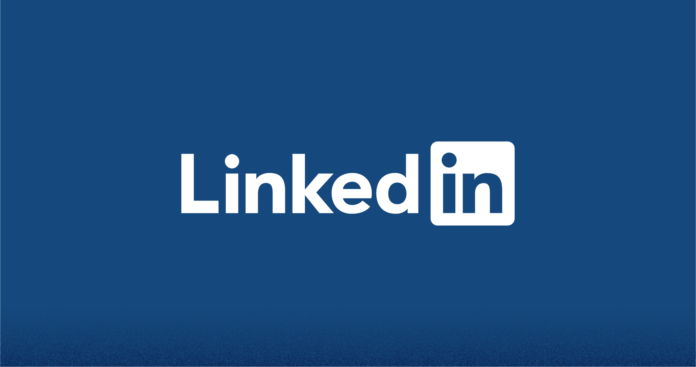Let’s face it; everyone talks about how to get leads on LinkedIn and how to convert the leads to clients. However, no one talks about what not to do that can harm your relationship with potential clients.
After listening to your sales manager orientation, following steps from experienced professionals in sales, talking to your sales team, creating an impressive profile, connecting with the right prospects, designing a content posting schedule, and engaging with your network regularly, it only makes sense to expect your inbox to flood with sales orders, right?
Well, the truth is, not so fast! There is a reason your prospects are getting cold feet, ignoring your inboxes, or not responding to the proposal you shared that they had requested.
The reason can be the mistakes that most small businesses make on LinkedIn highlighted below.
1. Pitching to prospects right away!
Would you propose a marriage proposal on the first date? Probably not; why are you doing it with your prospects? Asking for a sale on the first message is similar to asking a girl out for coffee and proposing to them during the coffee meeting? Do you think she will say yes? Probably not! While sales are a numbers game, don’t pursue numbers blindly. You can pitch to a thousand prospects and get one sale, or pitch to ten prospects and get three sales. Which method gives you more value for your time and effort? It is probably better to pitch to ten prospects and get three appointments than pitch to 100 prospects and get one appointment.
Understand that a sale is a process, and the pitch at every step aims to move the conversation to a higher channel. Your first interaction with a prospect on LinkedIn is the connection request message. After identifying a potential lead, the first step is to send a connection request. LinkedIn research indicates that connection requests accompanied by personalized messages are more likely to be accepted than those without a message.
The next message should be a brief thank you for connecting and a short compliment about something interesting that you have noticed on their profile. Keep nurturing the relationship with the prospect by sharing valuable information like eBooks, study findings, video tutorials, or any content that you feel your prospect might be interested in. Only pitch once you think your prospect is ready to learn more about your product or service.
2. Having an incomplete profile
Your LinkedIn profile is the first impression your prospects get about your businesses, brand, or professionalism. An incomplete profile is not only a turn-off to opportunities but leaves many questions unanswered. For instance, if you leave out your educational background details, prospects will start doubting your competence, professionalism, and ability to deliver on your promise.
Your LinkedIn profile is like your resume and should detail critical information that prospects require to make an informed decision.
Begin with an eye-catching headline that communicates your value proposition. Your headline should say who you are and what value you add to your clients. For instance, if you are a bookkeeper, adding the words ‘I help companies get paid faster, by maintaining an accurate record of debtors’ is a great way to communicate your value proposition as a bookkeeper.
On the about section, describe your experience, number of years in your field, skills, what you have achieved working in the past, and what you are known for. As a small business, make your profile tailored towards your ideal clients. For instance, if you are a small accounting firm looking to work with SMEs, talk about how you have helped SMEs grow, scale, and achieve success. Talking about your experience working for Fortune 500 companies might not resonate well with your target clients.
Your educational and job experience should be a true reflection of your education and professional journey. Talk about the university attended, and professional achievement, membership to a professional body, and the grades attained if you are comfortable sharing.
The professional journey should detail your employer’s history, including the job title, how long you worked for the employers, and what you accomplished during your time with the employers.
Testimonials and recommendations are a great way to build your credibility on LinkedIn. Request recommendations from colleagues, former employers, or former clients. Under testimonials, ensure that you get authentic, realistic, and genuine testimonials that reflect your service delivery.
3. Lack of company ties with employees
Most small businesses fail to recognize the power of having all the employees on LinkedIn and ensuring that all employees are tied to the company’s LinkedIn page.
One way to achieve this is by using the LinkedIn company page to welcome all new employees on board. Welcoming all your employees or announcing the entry of a new employee through your LinkedIn page is not only a great way to improve your LinkedIn visibility but a way to keep tabs on what your employees are sharing on LinkedIn.
While LinkedIn is their profile, employee activity on LinkedIn is a reflection of the company. For instance, if you own a technology company advocating for organic food, having an employee constantly sharing about fast food might confuse your audience.
All the employees must subscribe to the same vision and mission, and that is the company vision. The vision should begin with the CEO, down to the intern speaking the same language for consistency.
4. Automating your sales message
Using tools like Zopto or Expando, you can automate your sales message on LinkedIn. While automation can save you time and resources, there is a downside to automation that is not only harmful to your brand but unfair to your network. Using automation tools makes your message seem robotic, unthoughtful, unauthentic, and less engaging.
Here are some disadvantages of automating your sales message:
Can lead to over-messaging or spam.
Remember, everyone on LinkedIn is trying to get business; hence an average LinkedIn user gets three messages every day. As a small business, you aim to stand out among the crowd, and automating your message derails that vision.
Automation can depersonalize your brand.
Every marketing strategy aims to build a relationship with potential prospects. This implies conducting a thorough KYC (know your customer) process to understand your customer’s hobbies, interests, pain points, strengths, weaknesses, and other unique features about your clients. This level of personal interaction with customers is why most businesses choose to work with small businesses compared to big brands. When you automate your message, you lose the element of personalization, which is the only reason a company can choose you over big brands.
Automation eliminates your value proposition.
As a small business, your value proposition is your only chance to compete with big brands. Value proposition communicates your uniqueness, and you’re your uniqueness can help your clients eliminate their pain points. To understand a client’s pain point, you must understand their business, process, internal weakness, and other areas that need improving. After understanding their pain point, design a message that can eliminate their pain point. When you automate, you lose the opportunity to analyze and present a solution to the pain point.
Thus, while automation can be a great tool to reach out to many potential clients, ensure that you don’t end up pushing away some great leads while casting your net wide.
5. Not posting regularly
The basic rule of romantic relationships is that a bit of absence makes the heart grow fonder, but too much lack makes the heart wander. Well, the same applies to LinkedIn relationships. As a small business, you want to demonstrate to your network that you are an authority, the go-to person, and the thought leader in your field. but, for that, you have to be active on all the associated social channels, including LinkedIn, so you can manage and improve your online brand reputation.
You must demonstrate to your audience your skills, competence, knowledge in your field, recent changes in your field, and every resource that might benefit your network. Ensure that you have a content posting plan or template to keep your network informed and engaged.
For instance, you can start your day every morning by sharing an inspirational message, not necessarily related to your brand, but something inspirational, motivating, and encouraging. During the day, share an update about one of your services, which can be a milestone you have made with a client, beginning of a project, or handing over a project.
Creating and posting articles is another excellent way to keep your network engaged. Posting three articles every week is a great place to begin. Your articles should be informative, original, engaging, ever-green, and up-to-date. Other tips to ensure your articles give your audience value are outlined here.
Other than status updates and articles, video is a recent trend on LinkedIn engagement. Posting short, informative, exciting, and authentic videos is not only a great way to engage your audience but to improve your LinkedIn presence. According to a study by Hub Spot, videos are favored by LinkedIn algorithms; hence they can improve your visibility.
The hashtag is a recent development in LinkedIn engagement. By using hashtags, you can improve your visibility and make your content more visible among a specified network. For instance, if your target clientele is women in business, using hashtags like women in business, women entrepreneurs, and boss lady can make your content easily visible among women. Further, using hashtags enables you to engage more with your small community.
Thus, after connecting with your target network, ensure that you have a strategy to keep them engaged. Your plan should be consistent, attainable, and relatable.
6. Focusing on self-promotion
In this age of information, prospects are bombarded with marketing messages everywhere they turn. An average person receives 15 marketing messages every day. These messages can be from television, radio, print media, social media, billboards, and other channels.
The last thing you want is to add to the list of promotional messages your prospects have to deal with. Understand that your aim as a small business is not necessarily to sell but to build your profile, such that when your prospect is ready to buy, the first place they can think about is your website. Excessive Self-promotion can make your prospects view your messages as spam, and some will mute your updates.
Your objective on LinkedIn is to focus on adding value. Strive to share information that is educative and resourceful, as this is why most people are on LinkedIn. Once your network starts to view you as an expert in your field, they will begin making inquiries, and this is your opportunity to pitch. Also, ensure that you join groups relevant to your audience and regularly engage in the groups. Your focus should be to be helpful and add value to group members.
While LinkedIn is a powerful marketing tool, most small businesses fail to recognize their return to their input due to mistakes. By having an incomplete profile, pitching to prospects on the fits meeting, automating your LinkedIn messages, and posting irregularly, you create an impression of an inconsistent brand. Such a mistake harms your brand and can cost you business referrals, which are the main reasons every small business should be on LinkedIn.






















